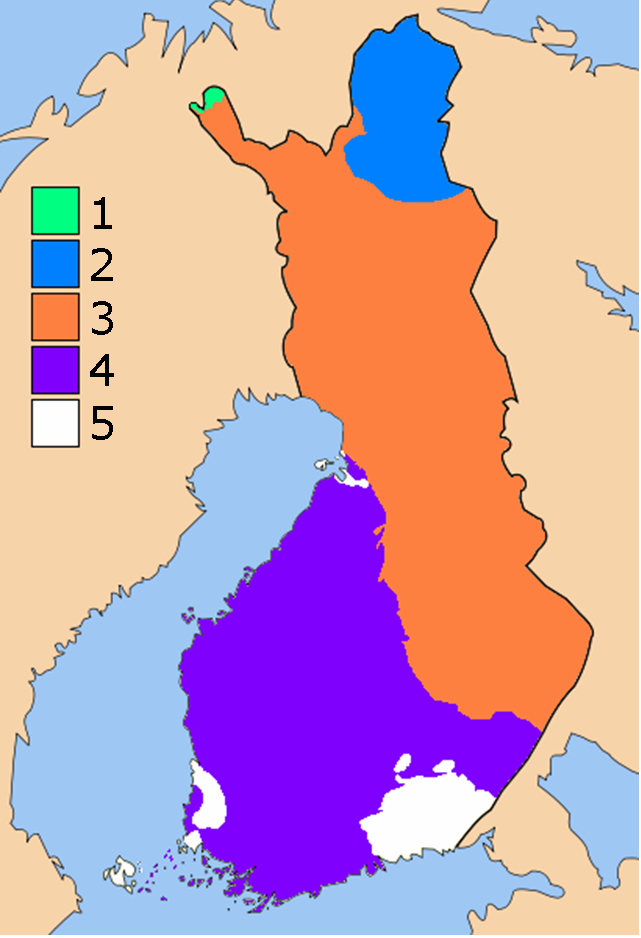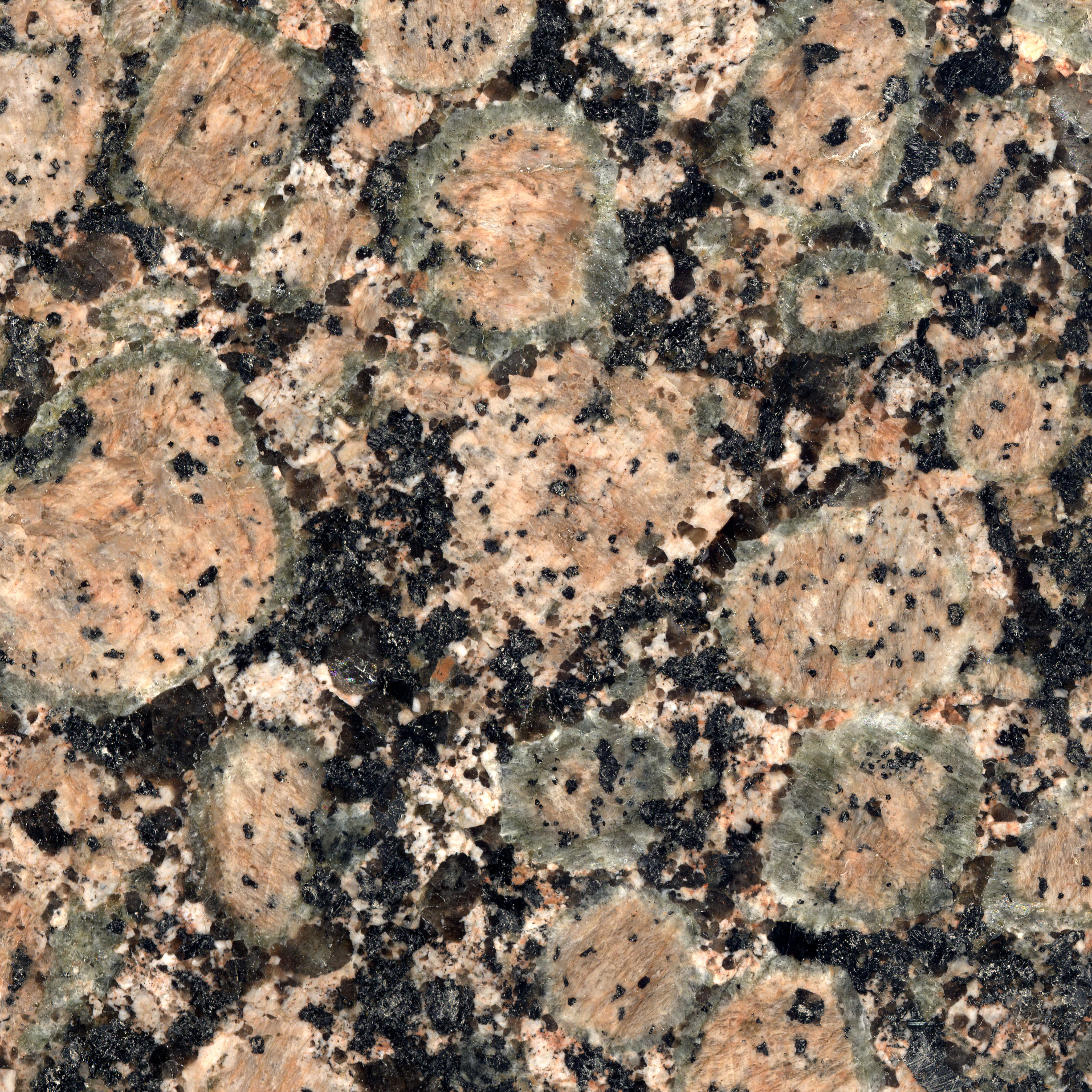|
Geology Of Finland
The geology of Finland is made up of a mix of geologically very young and very old materials. Common rock types are orthogneiss, granite, metavolcanics and metasedimentary rocks. On top of these lies a widespread thin layer of unconsolidated deposits formed in connection to the Quaternary ice ages, for example eskers, till and marine clay. The topographic relief is rather subdued because mountain massifs were worn down to a peneplain long ago. Precambrian shield The bedrock of Finland belongs to the Fennoscandian Shield and was formed by a succession of orogenies during the Precambrian. The oldest rocks of Finland, those of Archean age, are found in the east and north. These rocks are chiefly granitoids and migmatitic gneiss. Rocks in central and western Finland originated or were emplaced during the Svecokarelian orogeny. Following this last orogeny, rapakivi granites intruded various locations of Finland during the Mesoproterozoic and Neoproterozoic, especially in Åland ... [...More Info...] [...Related Items...] OR: [Wikipedia] [Google] [Baidu] |
Nationalencyklopedin
(; "The National Encyclopedia" in English), abbreviated NE, is a comprehensive contemporary Swedish-language encyclopedia with several hundred thousand articles. It is available both online and via a printed version. History The project was initiated in 1980 when a government committee suggested that negotiations be initiated with various publishers. A loan from the Government of Sweden of 17 million Swedish krona, which was repaid by December 1990, provided funding. In August 1985, in Höganäs became the publisher responsible for the project. The project specifications were for a modern reference work based on a scientific paradigm incorporating gender and environmental issues. Pre-orders for the work were unprecedented; before the first volume was published in December 1989, 54,000 customers had ordered the encyclopedia. The last volume came out in 1996, with three supplemental volumes in 2000. 160,000 copies had been sold as of 2004. Associated with the project ... [...More Info...] [...Related Items...] OR: [Wikipedia] [Google] [Baidu] |
Jotnian
In north European geology, Jotnian sediments are a group of Precambrian rocks assigned to the Mesoproterozoic Era ( Riphean), albeit some might be younger. Jotnian sediments include the oldest known sediments in the Baltic area that have not been subject to metamorphism. Stratigraphically, Jotnian sediments overlie the rapakivi granites and other igneous and metamorphic rocks and are often intruded by younger diabases. Overview Jotnian sediments include quartz-rich sandstones, siltstones, arkose, shale and conglomerates. The characteristic red colour of Jotnian sediments is due to their deposition in subaerial (e.g. non-marine) conditions. Jotnian sediments are the oldest known sediments in the Baltic area that have not been subject to metamorphism. Their age is poorly constrained, but generally they are younger than the rapakivi granites and older than ''Postjotnian'' diabases that intrude the sediments. This means that Jotnian sediments were deposited approximately 1600� ... [...More Info...] [...Related Items...] OR: [Wikipedia] [Google] [Baidu] |
Åland
Åland ( , ; ) is an Federacy, autonomous and Demilitarized zone, demilitarised region of Finland. Receiving its autonomy by a 1920 decision of the League of Nations, it is the smallest region of Finland by both area () and population (30,541), constituting 0.51% of Finland's land area and 0.54% of its population. Its only official language is Swedish language, Swedish and the capital city is Mariehamn. Åland is situated in an archipelago, called the Åland Islands, at the entrance to the Gulf of Bothnia in the Baltic Sea. It comprises Fasta Åland, on which 90% of the population resides, and about 6,500 Skerry, skerries and islands to its east, of which about 60–80 are inhabited. Fasta Åland is separated from the coast of Roslagen in Sweden by of open water to the west. In the east, the Åland archipelago is Geographic contiguity, contiguous with the Archipelago Sea, Finnish archipelago. Åland's only land border is located on the uninhabited skerry of Märket, which it ... [...More Info...] [...Related Items...] OR: [Wikipedia] [Google] [Baidu] |
Neoproterozoic
The Neoproterozoic Era is the last of the three geologic eras of the Proterozoic geologic eon, eon, spanning from 1 billion to 538.8 million years ago, and is the last era of the Precambrian "supereon". It is preceded by the Mesoproterozoic era and succeeded by the Paleozoic era of the Phanerozoic eon, and is further subdivided into three geologic period, periods, the Tonian, Cryogenian and Ediacaran. One of the most severe glaciation events known in the geologic record occurred during the Cryogenian period of the Neoproterozoic, when global ice sheets may have reached the equator and created a "Snowball Earth" lasting about 100 million years. The earliest fossils of complex life are found in the Tonian period in the form of ''Otavia'', a primitive sponge, and the earliest fossil evidence of metazoan evolutionary radiation, radiation are found in the Ediacaran period, which included the namesaked Ediacaran biota as well as the oldest definitive cnidarians and bilaterians in th ... [...More Info...] [...Related Items...] OR: [Wikipedia] [Google] [Baidu] |
Mesoproterozoic
The Mesoproterozoic Era is a geologic era that occurred from . The Mesoproterozoic was the first era of Earth's history for which a fairly definitive geological record survives. Continents existed during the preceding era (the Paleoproterozoic), but little is known about them. The continental masses of the Mesoproterozoic were more or less the same ones that exist today, although their arrangement on the Earth's surface was different. Major events and characteristics The major events of this era are the breakup of the Columbia supercontinent, the formation of the Rodinia supercontinent, and the evolution of sexual reproduction. This era is marked by the further development of continental plates and plate tectonics. The supercontinent of Columbia broke up between 1500 and 1350 million years ago, and the fragments reassembled into the supercontinent of Rodinia around 1100 to 900 million years ago, on the time boundary between the Mesoproterozoic and the subsequent Neoprot ... [...More Info...] [...Related Items...] OR: [Wikipedia] [Google] [Baidu] |
Intrusion (geology)
In geology, an igneous intrusion (or intrusive body or simply intrusion) is a body of intrusive igneous rock that forms by crystallization of magma slowly cooling below the surface of the Earth. Intrusions have a wide variety of forms and compositions, illustrated by examples like the Palisades Sill of New York and New Jersey; the Henry Mountains of Utah; the Bushveld Igneous Complex of South Africa; Shiprock in New Mexico; the Ardnamurchan intrusion in Scotland; and the Sierra Nevada Batholith of California. Because the solid country rock into which magma intrudes is an excellent insulator, cooling of the magma is extremely slow, and intrusive igneous rock is coarse-grained ( phaneritic). Intrusive igneous rocks are classified separately from extrusive igneous rocks, generally on the basis of their mineral content. The relative amounts of quartz, alkali feldspar, plagioclase, and feldspathoid is particularly important in classifying intrusive igneous rocks. Intru ... [...More Info...] [...Related Items...] OR: [Wikipedia] [Google] [Baidu] |
Rapakivi Granite
Rapakivi granite is an igneous intrusive rock and variant of alkali feldspar granite. It is characterized by large, rounded crystals of orthoclase each with a rim of oligoclase (a variety of plagioclase). Common mineral components include hornblende and biotite. The name has come to be used most frequently as a textural term where it implies plagioclase rims around orthoclase in plutonic (intrusive) rocks. Rapakivi is a Finnish compound of "rapa" (meaning "mud" or "sand", while ''rapautua'' means "to erode") and "kivi" (meaning "rock"), because the different heat expansion coefficients of the component minerals make exposed rapakivi crumble easily into sand. Rapakivi was first described by Finnish petrologist Jakob Sederholm in 1891. Since then, southern Finland's rapakivi granite intrusions have been the type locality of this variety of granite. Occurrence Rapakivi is a fairly uncommon type of granite, but has been described from localities in North and South America ( Ill ... [...More Info...] [...Related Items...] OR: [Wikipedia] [Google] [Baidu] |
Svecofennian Orogeny
The Svecofennian orogeny is a series of related orogenies that resulted in the formation of much of the continental crust in what is today Sweden and Finland along with minor parts of Russia, mainly within what is today the Republic of Karelia. The orogenies lasted from about 2000 to 1800 million years ago during the Paleoproterozoic Era. The resulting orogen is known as the Svecofennian orogen or Svecofennides. To the west and southwest the Svecofennian orogen limits with the generally younger Transscandinavian Igneous Belt. It is assumed that the westernmost fringes of the Svecofennian orogen have been reworked by the Sveconorwegian orogeny just as the western parts of the Transscandinavian Igneous Belt has. The Svecofennian orogeny involved the accretion of numerous island arcs in such manner that the pre-existing craton grew with this new material from what is today northeast to the southwest. The accretion of the island arcs was also related to two other processes th ... [...More Info...] [...Related Items...] OR: [Wikipedia] [Google] [Baidu] |
Migmatite
Migmatite is a composite rock (geology), rock found in medium and high-grade metamorphic environments, commonly within Precambrian craton, cratonic blocks. It consists of two or more constituents often layered repetitively: one layer is an older metamorphic rock that was reconstituted subsequently by partial melting ("paleosome"), while the alternate layer has a Pegmatite, pegmatitic, Aplite, aplitic, Granite, granitic or generally plutonic appearance ("neosome"). Commonly, migmatites occur below deformed metamorphic rocks that represent the base of eroded mountain chains. Migmatites form under extreme temperature and pressure conditions during Metamorphism#Prograde and retrograde, prograde metamorphism, when partial melting occurs in metamorphic paleosome. Components Solid solution, exsolved by partial melting are called neosome (meaning ‘new body’), which may or may not be heterogeneous at the microscopic to macroscopic scale. Migmatites often appear as tightly, incoheren ... [...More Info...] [...Related Items...] OR: [Wikipedia] [Google] [Baidu] |
Granitoid
A granitoid is a broad term referring to a diverse group of coarse-grained igneous rocks that are widely distributed across the globe, covering a significant portion of the Earth's exposed surface and constituting a large part of the continental crust. These rocks are primarily composed of quartz, plagioclase, and alkali feldspar. Granitoids range from plagioclase-rich tonalites to alkali-rich syenites and from quartz-poor monzonites to quartz-rich quartzolites. As only two of the three defining mineral groups (quartz, plagioclase, and alkali feldspar) need to be present for the rock to be called a granitoid, foid-bearing rocks, which predominantly contain feldspars but no quartz, are also granitoids. Nomenclature and classification The terms ''granite'' and ''granitic rock'' are often used interchangeably for granitoids; however, granite is just one particular type of granitoid. Granitoids are diverse. No classification system for granitoids can give a complete and unique ... [...More Info...] [...Related Items...] OR: [Wikipedia] [Google] [Baidu] |
Archean
The Archean ( , also spelled Archaean or Archæan), in older sources sometimes called the Archaeozoic, is the second of the four geologic eons of Earth's history of Earth, history, preceded by the Hadean Eon and followed by the Proterozoic and the Phanerozoic. The Archean represents the time period from (million years ago). The Late Heavy Bombardment is hypothesized to overlap with the beginning of the Archean. The Huronian glaciation occurred at the end of the eon. The Earth during the Archean was mostly a ocean world, water world: there was continental crust, but much of it was under an ocean deeper than today's oceans. Except for some rare Relict (geology), relict crystals, today's oldest continental crust dates back to the Archean. Much of the geological detail of the Archean has been destroyed by subsequent activity. The Earth's atmosphere was also vastly different in atmospheric chemistry, composition from today's: the prebiotic atmosphere was a reducing atmosphere rich in ... [...More Info...] [...Related Items...] OR: [Wikipedia] [Google] [Baidu] |






